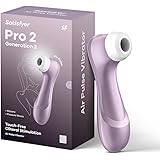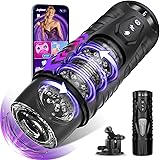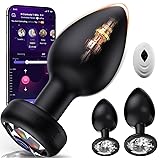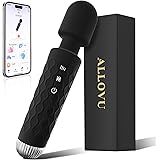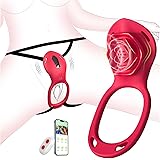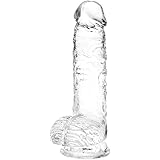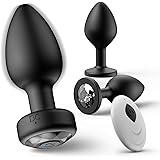
Introduction to Penis Size Studies
The study of average penis size is a topic that has cultivated interest across various cultures and academic disciplines. Understanding penis size is not merely a matter of curiosity; it has implications for self-esteem, psychological well-being, and sexual health. Historically, societal norms and cultural beliefs have shaped the perception of penis size, linking it to masculinity, virility, and desirability. In many communities, penis size is often associated with notions of superiority or inferiority, impacting relationships and individual self-image.
Research into average penis size spans several decades and involves a variety of scientific methods, including direct measurements, surveys, and anthropological studies. These studies aim to provide empirical data on penis size, seeking to establish averages that can counteract myths and misinformation that have persisted over time. Commonly, studies have demonstrated that misconceptions regarding penis size often stem from exaggerated media portrayals and anecdotal evidence rather than scientific facts.
Furthermore, discussions surrounding average penis size frequently intersect with geographical and racial perspectives. Differences in average measurements can be observed, highlighting how geographical ancestry and environmental factors may contribute to variations. This creates an intriguing framework for understanding not only anatomy but also how cultural attitudes shape perceptions of masculinity and sexual function.
As researchers continue to explore this subject, it becomes increasingly clear that the discussion surrounding average penis size holds significance far beyond the physical dimension. Understanding penis size encompasses psychological, social, and cultural dimensions that warrant objective investigation. By addressing these factors, debates and discussions can be conducted from a standpoint grounded in evidence rather than stereotype, enabling a broader understanding of human anatomy and its impact on individual experience.
The Science Behind Measuring Penis Size
Understanding the measurements of penis size involves various methodologies that seek to ensure accuracy and reliability in data collection. Researchers typically utilize two primary types of measurements: length and girth, which can be taken in both flaccid and erect states. Flaccid measurements refer to the penis at rest, while erect measurements capture its size during full arousal. The distinction between these measurements can have significant implications, as variability in size is common based on these states.
To measure length, researchers usually employ a ruler or a measuring tape, placing it along the dorsal side of the penis, starting from the pubic bone to the tip of the glans. Girth, or circumference, is measured by wrapping a flexible measuring tape around the thickest part of the shaft, ensuring a snug but not overly tight fit. Such methodologies enable a comprehensive understanding of average penis size across different demographics.
While these measurements may appear straightforward, various factors can influence their accuracy. For instance, the participant’s level of arousal can lead to significant changes in size, making it essential for researchers to account for this variable when analyzing data. Aside from physiological factors, an individual’s overall health, including conditions such as obesity or hormonal imbalances, can also impact measurement outcomes. Moreover, the environment in which measurements are taken — including temperature and privacy — can affect the participant’s comfort level and state of relaxation, ultimately influencing results.
Overall, the science behind measuring penis size is multifaceted and considers diverse elements to enhance the credibility of findings. Accurate data on penis size contributes to a better understanding of sexual health and body image, making such research valuable in a broader context.
Global Averages: A Geographic Analysis
Understanding the geographical disparities in average penis size provides essential insights into human anatomy across different cultures and regions. Numerous studies have been conducted to measure penis size, often leading to intriguing geographical comparisons. These studies typically focus on both erect and flaccid sizes, allowing for a comprehensive analysis.
According to research compiled from various surveys and medical studies, the average erect penis size varies significantly across continents. For instance, men from Africa tend to report larger sizes, with averages often cited around 6.3 to 6.5 inches (16 to 16.5 cm). In contrast, the average size reported in Asian countries is comparatively lower, with averages ranging from 4.5 to 5.5 inches (11.5 to 14 cm). European countries typically report averages that are in between these ranges, highlighting the influence of geography on physiological attributes.
Factors contributing to these disparities include genetic ancestry, nutrition, and environmental conditions. For example, nutrition and hormonal levels during development are crucial and may lead to variations in average sizes. Several studies have indicated that populations living in more affluent conditions tend to report larger averages, suggesting an interplay between lifestyle and physiological development.
Furthermore, a notable aspect of this analysis is the variation in measurement methods. Self-reported measurements often introduce bias, leading to inflated statistics due to perceived social expectations. However, clinical studies offer a more reliable dataset, although these too can be limited by participant diversity.
Charts and statistical data reveal these patterns starkly, reflecting how geography plays a pivotal role in the understanding of average penis size. As such, geographical context is critical when discussing anatomical differences, emphasizing the complexity of human biology shaped by a multitude of influences.
The Role of Race and Ethnicity in Penis Size Variability
The variability in average penis size across different races and ethnicities has been a subject of research for many years. Numerous studies have investigated the differences in average sizes, often revealing significant discrepancies among various groups. For instance, research conducted by the British Journal of Urology International (BJUI) has suggested that men of West African descent tend to report higher averages in both length and girth compared to their counterparts in Asia or Europe. This persistence of size variability highlights the complex interplay between genetics, environment, and societal perceptions.
Furthermore, it’s essential to consider the cultural implications that can shape beliefs about penis size. In many cultures, there is a strong emphasis placed on size as a symbol of masculinity and virility. This cultural narrative can enhance the perceived importance of size in sexual relations, which may influence self-esteem and body image among men. Ethnic stereotypes often perpetuate these perceptions, creating a cycle of expectation and identity within different communities. For example, the archetype of large size attributed to certain racial groups may reinforce unrealistic standards, leading to feelings of inadequacy for those who do not conform to these ideals.
Moreover, various studies indicate that societal constructs regarding size can result in psychological effects that extend beyond mere physical measurements. Men may internalize these societal standards, which may impact their relationships and self-perception. While it is vital to acknowledge these disparities and perceptions, it is equally important to approach the topic with sensitivity and an understanding of the broader context. Recent scholarship argues for a more inclusive perspective, recognizing that penis size is just one aspect of human diversity and does not define a man’s worth or capabilities. Such an approach encourages respectful dialogue and diminishes stigma associated with such personal attributes.
Cultural Perceptions and Myths About Penis Size
The perceptions of penis size are deeply ingrained within various cultures, often influenced by historical narratives, societal norms, and prevailing stereotypes. These cultural narratives can foster a set of ideals regarding masculinity, which in turn shape individuals’ beliefs about desirability and worth. Societal expectations often espouse the notion that larger sizes are synonymous with virility, power, and success, which can lead to a myriad of complex feelings about masculinity and self-esteem for those who do not conform to these ideals.
Media often perpetuates these myths, showcasing exaggerated representations which contribute to unrealistic standards. Films, television shows, and advertisements frequently highlight the notion that a man’s worth is inextricably tied to the size of his penis. This can lead to rampant misconceptions, with many believing that these exaggerated portrayals accurately reflect reality. Furthermore, folklore and folk tales have historically echoed the sentiment that size matters, embedding such ideas in the collective consciousness of societies.
Contrarily, comprehensive research demonstrates that such stereotypes do not hold universally across different populations. Studies reveal a more nuanced understanding of average penis size and circumference, showing that many men fall within a standard range across various demographics. By presenting empirical data, researchers have sought to dispel the myths that often dominate the conversation surrounding this topic. Such evidence undermines the claims made by popular culture that size is the ultimate metric of masculinity, drawing attention to the broader spectrum of male identity.
Ultimately, it is crucial to foster a dialogue that confronts these entrenched cultural myths, promoting a healthier, more inclusive perception of masculinity. By critiquing societal norms and emphasizing the diversity of male anatomy, society can gradually shift towards a more accepting viewpoint, alleviating the pressures surrounding penis size that men often face due to cultural influences.
Psychological Implications of Penis Size Perceptions
The perception of penis size plays a significant role in shaping individual self-esteem and body image. In many cultures, particularly Western societies, larger penis sizes are often idealized, leading to an assumption that size is directly correlated with masculinity and sexual prowess. This societal expectation creates pressure on individuals to conform to these standards, and those who perceive themselves as falling short of these ideals may experience diminished sexual confidence and anxiety.
Men who believe they possess a smaller-than-average penis may internalize negative stereotypes, which can escalate feelings of inadequacy and insecurity. This phenomenon is not limited to personal perception; societal norms and media representations perpetuate these ideals, further influencing how men view themselves and their bodies. For example, the prevalence of depictions of large penises in pornography can distort reality, leading to unrealistic expectations and misinformation about what constitutes an average size.
These perceptions can also affect interpersonal relationships. Men who feel inadequate about their size may avoid intimate situations, leading to decreased opportunities for sexual experiences and relationships. In some cases, these feelings can result in maladaptive coping strategies, such as seeking validation through aggressive behavior or engaging in compensatory actions to mask their insecurities. Furthermore, this perception does not only affect men; it can also impact women’s perceptions of their partners and their own self-worth, contributing to broader societal dynamics.
Ultimately, the psychological implications associated with perceptions of penis size illustrate the intense societal pressures surrounding the concept of masculinity. As individuals encounter these pressures, addressing the underlying stereotypes and promoting a more inclusive understanding of body image can potentially enhance self-esteem and psychological well-being. Recognizing that penis size does not define one’s worth or capabilities is crucial in reframing these perceptions and fostering healthier attitudes towards body image.
Health Implications and Sexual Functioning
Research into the relationship between average penis size and health has garnered considerable attention within the medical and scientific communities. An important aspect of this inquiry pertains to erectile dysfunction (ED) and sexual performance, which are often influenced by multiple factors including psychological well-being, hormonal levels, and blood circulation. While some studies suggest that average size might play a role in perceived sexual satisfaction, it is crucial to understand that penis size alone does not dictate overall sexual health or functionality.
Scientific literature indicates that some individuals may develop insecurities regarding their size, potentially leading to anxiety or low self-esteem. This psychological factor can contribute to or exacerbate issues related to sexual functioning, including erectile dysfunction. For example, a study published in the Journal of Sexual Medicine found that men who were unsatisfied with their size reported higher incidences of performance anxiety and erectile difficulties. Conversely, size did not appear to correlate directly with physiological factors leading to ED.
The perception of sexual performance often hinges on a multitude of factors beyond anatomical dimensions. Communication, emotional intimacy, and mutual understanding between partners are critical for a fulfilling sexual experience. Research emphasizes that enhancing sexual health is more effectively achieved through practices such as maintaining a healthy lifestyle, engaging in regular physical activity, and managing stress. Furthermore, addressing underlying health issues such as hypertension, diabetes, or hormonal imbalances can also mitigate problems associated with sexual function.
Overall, while average penis size and circumference might be topics of discussion, they are not definitive indicators of sexual health or performance. Fostering a comprehensive understanding of sexual well-being emphasizes the importance of communication, mutual respect, and holistic health rather than a sole focus on size, thereby promoting a healthier attitude toward sexual relationships.
Personal Stories: Experiences and Perspectives
When exploring the topic of average penis size and circumference, it is essential to acknowledge the personal experiences that shape individual perceptions and societal attitudes. Individuals from diverse backgrounds often have varying narratives that underscore how size can impact relationships and personal identity. For many, these experiences can be marked by insecurity, humor, or even empowerment. One individual, John, shared how his modest size initially fostered feelings of inadequacy, particularly during adolescence, a time when societal pressure to conform was overwhelming. He conveyed a sense of relief when he learned that others shared his concerns, which helped him reassess the importance of size in intimate relationships.
Conversely, Mike’s experience was vastly different. He recounted how societal expectations and cultural narratives reinforced his perception of masculinity as intertwined with penis size. This led him to navigate relationships with anxiety, often worrying that he would not meet his partner’s expectations. This self-doubt occasionally hindered his ability to forge deep connections, reinforcing the idea that penis size could define self-worth and desirability. However, through open conversations with partners, he gradually learned that compatibility and mutual respect outweighed numerical value in human intimacy.
Moreover, Sarah shared a positive story, explaining that she never prioritized size in her relationships. Instead, she emphasized emotional connection and communication. Sarah highlighted how her partners’ attentiveness and empathy surpassed any preconceived notions about penis size. Her perspective reveals that personal identity can be shaped by experiences beyond physical dimensions, a sentiment echoed by numerous voices in the dialogue surrounding average penis size.
These narratives exemplify the complexities surrounding perceptions of penis size, illustrating that while it may hold significance for some, it is ultimately just one aspect of a much broader human experience. Through these personal stories, we gain a better understanding of the emotional landscapes shaped by societal expectations and individual circumstances.
Conclusion: Insights and Future Directions
In the examination of average penis size and circumference across different geographical and racial groups, several crucial insights emerge that challenge common preconceptions. The variability in size is not solely a biological issue but one deeply intertwined with numerous cultural, environmental, and genetic factors. These dimensions highlight that penis size cannot be generalized and is subject to a wide range of experiences. Various studies indicate that, while some regions show distinct averages, others demonstrate extensive overlap, suggesting that cultural perceptions and stereotypes often magnify these differences.
Furthermore, while research has attempted to outline averages, it is essential to recognize the limitations posed by sample sizes and the methodologies employed. Many studies are often confined to specific populations or may not adequately account for all influencing variables, leading to an incomplete understanding. This recognition emphasizes the necessity for further research in this realm to broaden our insights. Future studies should consider larger and more diverse sample groups, utilizing advanced methodologies that can accurately reflect the complexities of human variation.
Additionally, it is vital to approach this topic with both an open mind and a critical perspective. As society continues to evolve, the focus on anatomical averages should pivot toward understanding the social implications and meanings attached to penis size within cultural contexts. Addressing potential stigmas surrounding size can contribute to a more informed and compassionate discourse. Therefore, engaging with this subject requires careful consideration, while fostering acceptance and reducing embarrassment or anxiety related to size perceptions.
Ultimately, enhancing our understanding of penis size through geographical and racial lenses not only enriches scientific discourse but also promotes a healthier, more inclusive conversation about human anatomy and sexual health.







